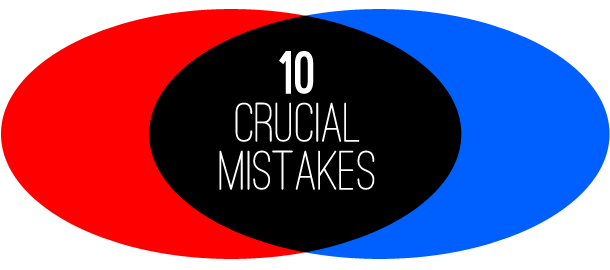
This is a guest post by Jason Lorimer. Jason is an entrepreneur @CulturaHQ, advocating on behalf of those with the ambition to do more than just entertain ideas.
“Whenever you find yourself on the side of the majority, it is time to pause and reflect.”
— Mark Twain
The Low Hanging Fruit is Picked Clean
In the post-internet age — out of all the ambitious would-be entrepreneurs in the world, only a small percentage of them are being well served by the early stage venture capital system.
Serving that select few – say 5% (some say less than 1%) of entrepreneurs who have some technical savvy and can clearly communicate their idea — these funding-seekers kept the early stage capital engine running without anyone having to get their hands too dirty. Now, with a number of different early stage investment and incubation vehicles to serve that same small percentage of entrepreneurs, there are simply not enough early stage companies that fit into that mold and too many entities vying for the attention of the relatively few that do. These capital providers are now finding themselves, instead, in the humbling position of having to compete and eventually market themselves to those best packaged investment opportunities.
Instead of competing with each other and with the highly desirable incubators, they should change the hunting game.
Those Damn Incubators
Good for that small, elite percentage of entrepreneurs — and bad for Angels – incubators are cropping up everywhere – becoming the go-to for the savviest of entrepreneurs with refined concepts.
At first, Angels’ knee-jerk reaction to this change inferred that they believed they either were left to watch incubators feed on their game – or compete.
And competing is likely the path of most resistance.
It is difficult for Angels to compete on deal terms with an incubator because they typically are founded by proven entrepreneurs, have large panels of mentors and provide an environment that promotes collaboration.
Incubators are very seductive, if an entrepreneur gets accepted into one of these programs, especially the likes of Y Combinator and Tech Stars, they are going to go regardless of what an Angel is offering. They see their chances for success as greater with an incubator. Whether that is true remains to be seen.
And here Angels made another play.
When it became clear that competing with incubators was futile, Angels moved to position themselves as advocates for these programs. Solid logic here: Let the incubators work with the start up — get a viable product in market and you will be there on graduation day ready to cut a check. This strategy has two flaws, one more significant than the other.
First, not all incubators are created equal. The proliferation of the incubator or accelerator as they are now more fashionably referred to is upon us. There are now hundreds of programs out there. When the smoke clears, all the early stage capital sources are going to be competing to get access to deals from the same handful of these programs.
Second, instead of working together to hedge your risk and share deals, Angels are forced into competing with one another because of a shortage of what have to date been considered viable deals to invest in. While this may bode well for the entrepreneur in the short term, over time, what will essentially become a price war is bad for the entire system of early stage capital.
One need only look at the announcement that Yuri Milner, Managing Partner of Digital Sky Technologies, investors in the likes of Facebook, Groupon and Zynga, to find a case and point
for both of these issues. Mr. Milner, using a separate entity, aptly named the Start Fund with partner Ron Conway, decided to make a blind, blanket investment of $150K into each and every single accepted applicant in this years Y Combinator class. They removed the possibility of having to compete with other funds for the attention and deal flow of the most well-known accelerator in the US.
A lot of people, both within the investment community and outside of it, balked at this idea – seen as a reckless and ultimately unnecessary way to invest. Those people are likely short-sighted and are missing two key points that it would seem the Start Fund fully understands:
1. He who invests first controls the deal going forward.
2. See point #1
Remember, one win pays for all the losses. That is the fundamental model at play in early stage investments and subsequently the logic behind the incubator. One Facebook pays for 9, or in their case, 900 companies that fell flat. The people that invested in the seed round for Facebook are sitting pretty right about now as they were first in line to invest in each subsequent round of capital infusion.
Investor and all around smart guy Chris Yeh has a great guest post on Tech Crunch about how the Yuri Milner/Y Combinator deal affects the ecosystem as a whole. He talks at length about the idea of investing first. I highly recommend giving it a read.
Enter the Big Boys
Adding insult to injury for the average Angel investor is the emergence of the biggest of players like Google and Microsoft into the early stage equation. Without knowing Mr. Milner personally I would also have to guess that the catalyst, at least in part, for making what has been considered such a bold move is the Googles and Microsofts getting aggressive in this space.
These large companies, with the resources to catapult about any entrepreneur into the life they are after, have started to position themselves along side Angels in the deal-flow and they’re offering the accelerator programs perks like exclusive access to certain technologies and customers. These programs in turn using the same to help better position themselves to get applicants from the best of the best start-ups.
For these big organizations, positioning themselves in this fashion is also a way to identify and get their hands on great developers through early acquisition. Development talent being something there is a great shortage of right now.
If You Can’t Join Them — Beat Em’
In the end, there are simply too many of these programs and not enough entrepreneurs that fit the mold investors have come to rely on: technical founders who can not only clearly communicate their idea, but also build the minimum viable product and prove it in market prior to taking on a seed round.
It is likely that we will now begin to see a series of unsustainable strategic partnerships between investors and the accelerator programs. Don’t be surprised if it starts to get gimmicky or, for better or worse, you start to see government subsidies playing a major role.
All of this is a temporary band-aid on what is fundamentally a market problem that only a new model can fix.
A new way of doing things that takes into account the other 95%.
That group is made up of entrepreneurs who may not be able to code and often times are not able to quickly and concisely convey their idea at first. These ambitious, intelligent people make up the largest opportunity for early stage investors to ever come down the pipe. The only catch is that Angels are going to have to get their hands a little dirty. Angel investors who still insist on playing a primarily passive role must evolve or face the fact that like many of the industries they invest in, a fundamental shift is forcing formerly sustainable parties out of the ecosystem in which they are a part.
Don’t Overshoot the Mark
Some individuals are already partnering up with fellow investors and entrepreneurs to form their own accelerator programs. There are seed funds with an advisory board of some kind and space from which entrepreneurs can work. While you will likely see some successful ventures born this way, I would argue this is too short-sighted thinking — skating to where the puck used to be if you will.
These programs still serve the same small percentage of entrepreneurs and leave the largest market untapped. All at a time where cost of entry is nominal and problems to solve using inexpensive technologies are abundant. In terms of opportunities to build products and platforms people can find utility in — to participate in and add value to their own experiences — we are just getting started.
I don’t expect every investor to roll up their sleeves and partner with entrepreneurs to build and run companies in the earliest and most important phases of a start up. It is my position that the next evolution of this industry is in strategic relationships with hybrid development teams. Teams with the ability to cost effectively and efficiently build, incubate and iterate new ventures to a pre-scale position. One where the investors capital is most useful and for that matter — measurable.
Vested Deployment Teams
To be clear, the answer is not in going out and finding a design/development team. Hiring them to work with your entrepreneur(s) will often be throwing money down the drain. A lot of money.
In the end it is not a question of quality, but of motivation. A typical developer or digital agency as the larger ones are being called is in the business of building solutions for their clients and charging more per hour than it costs them — simple math. Some of these companies take on certain side projects on an equity basis but without focus, any start up, no matter how good the idea or the team is doomed. Ideally, the deployment team you work with would, like us, work exclusively in vested relationships.
Create a vested deployment team of your own, employ an incubation staff or call us.
Just make sure you are doing something to get out ahead of the shift in this industry and soon.
For more startup news, follow us on Twitter @startupfoundry or on Facebook.





















